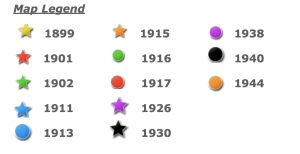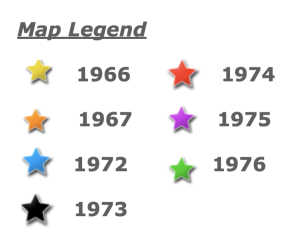Buddhism’s presence in the United States can be traced back to the late nineteenth century when Japanese immigrants (Issei) first arrived on the West Coast. A majority of the first Buddhist temples were established in California, with the first being constructed in San Francisco in 1899. These temples were loosely organized by the Young Men’s Buddhist Association (YBA), which conducted the dispatch of reverends and officials to emerging religious centers. The Buddhist experience in America was significantly impacted by World War II and its rippling domestic consequences for Japanese Americans (Nisei). President Franklin D. Roosevelt’s executive order 9066 in 1942 designated Japanese Americans as national security risks and had them relocated to various internment camps throughout the Southwest and Midwest.
This fundamentally reshaped Japanese American population numbers and altered Buddhist engagement. With the disbandment of the Relocation War Authority (WRA) in 1946, Japanese American Buddhists had to re-centralize, adopting the Christian model for their organization. The establishment of the Buddhist temples of America in 1944 assisted in the construction of new buildings in the Midwest and on the East Coast.
The visual map below allows for user interactivity to explore the different locations that were developed between 1899 and 1994. Please feel free to click on each point for information. While not shown, you are able to click on the symbol “?” which will forward you to a separate page featuring an image related to each point on the map.
[advanced_iframe src=”//arcg.is/D9OrH0″ width=”100%” height=”600″]

As the map above shows, Buddhist temples sprung up on the West Coast during the early quarter of the twentieth century and gradually moved towards the East, following Japanese Nisei immigration trends.
[advanced_iframe src=”https://datawrapper.dwcdn.net/Rjn5c/2/” height=”600″]
The graph shows how Buddhist temple construction peaked prior to World War II
Buddhist centers and communities around the country continued to grow as different sects and variations in the religion developed as well. In particular, the promotion of Zen Buddhism by scholars like Alan Watts led to the creation of various Zen centers across the country. The map below illustrates the different Zen centers that were established throughout the 1960s and 1970s. It is worth noting that many of the new centers were formed on the East Coast given both the countercultural association with cities like New York and the fact that Buddhist scholars like D.T. Suzuki held lectures throughout universities on the Eastern seaboard.
The visual map below allows for user interactivity to explore the different Zen centers that were built between 1966 and 1976. Please feel free to click on each point for information. While not shown, you are able to click on the symbol “?” which will forward you to a separate page featuring an image related to each point on the map.
[advanced_iframe src=”https://arcg.is/zLKSy0″ width=”100%” height=”600″]

As the graph below shows, the number of Zen centers grew exponentially over the course of the 1960s and 1970s. The rising popularity of Zen and its broad spiritual appeal meant that more individuals could adhere to the religion without being fully versed in its core tenets.
[advanced_iframe src=”https://datawrapper.dwcdn.net/SGaRA/7/” width=”100%” height=”600″]
Methodology
The information collected in order to create this page’s visuals was gathered from the Buddhist Churches of America (BCA) website. The site itself lists the locations affiliated within the BCA, providing general information concerning the background and history of each location. General information on the growth of Buddhism in the United States was provided through Manama Ratanamani’s 1960 Master’s thesis. In particular, the thesis gave a general overview of Japanese American experiences prior, during, and following the Second World War.
References
Ratanamani, Manimai. “History of Shin Buddhism in the United States.”Master’s thesis. University of the Pacific, 1960. https://scholarlycommons.pacific.edu/uop_etds/1467